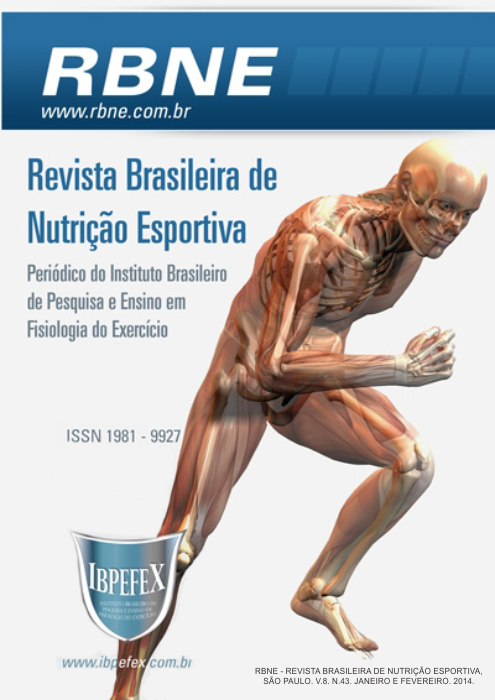Analysis of methods and strategies about weight loss in athletes of mixed martial arts during pre-competitive period.
Abstract
Mixed Martial Arts (M.M.A.) is a sport thatcombines various types of fight modes in a single combat rule. It requires heavy training and attention to all details of the mixed martial arts in order for the athlete to be 100% fit and precise in the day of the fight. The aim of this study was to evaluate the methods and strategies used in M.M.A. for weigh loss in the athlete’s physiological system, as well as to evaluate their performance. A questionnaire was given to the M.M.A. athletes for them to answer what they practice in order to accomplish rapid body mass loss. The program, Microsoft Excel 2007, was utilized for tab graphics. A total of 8 male athletes, from the ages of 21 to 35, responded to the questionnaire. The method used for weight loss by using sauna and antiperspirant clothes was 90% and the restriction of carbohydrate was 80% and liquid was 40%, being that this restriction and weight loss occurs in the pre-competitive week. These strategies cause harmful effects to the M.M.A. athletes, such as hormonal imbalance, electrolyte imbalance, cardiovascular system alterations, decreased renal function, impaired mental status in the long term, as well as mood changes. An Inadequate diet and short recovery time can lower the athlete's anaerobic performance, which prevails in M.M.A. This research can teach M.M.A athletes that through gradual changes and some nutritional rules, they can obtain a solution to impede rapid weight loss.
References
-Artioli, G. G; Coelho D. F; Benatti, F. B; Gailey, C. W; Gualano, A.; Lancha Junior, H. A ingestão de bicarbonato de sódio pode contribuir para o desempenho em lutas de judô. Revista Brasileira de Medicina do Esporte. Vol. 12. Num. 6. 2006. p. 371-375.
-Benardot, D. Nutrición para deportistas de alto nível. Barcelona: Hispano-Europea. 2001.
-Bounty, P. L; Campbell, B, I; Galvan, E; Cooke, Antonio, J. Strength and Conditioning Considerations for Mixed Martial Arts. National Strength and Conditioning Association. Vol. 33. Num. 1. 2011.
-Fabrini, S. P; Brito, J. C; Mendes, E. L; Sabarense, C. M; Bouzas Marins, J. C; Franchini, E. Práticas de redução de massa corporal em judocas nos períodos pré-competitivos. Revista Brasileira de Educação Física e Esporte. São Paulo. Vol. 24. Num. 2. 2010.
-McArdle, W. D. Nutrição para o esporte e o exercício. 3ª edição. Rio de Janeiro. Guanabara Koogan. 2011.
-Oppliger, R. A; Case, H. S; Horswill, C. A; Landry, G. L; Shelter, A. C. American college os sports Medicine position stand. Weight loss in wrestlers. Med. Sci. Sports Exerc. USA. Vol. 38. p. 963-70. 2006.
-Paiva, L. Pronto pra guerra: Preparação física específica para luta e superação. Manaus. AM. OMP Ed. 2009.
-Roemmich, J. N; Sinning, W. E. Weght loss and wrestling training: effect on nutrition, growth, maturation, body composition, and streght. Journal of Applied Physiology. Washington. Vol. 82. Num. 6. p. 1751-9. 1997.
-Sawka, M. N; Montain, S. J. Fluid electrolyte suppementation for exercise heat stress. The American Journal of Clinical Nutricion. Bethesda. Vol. 72. p. 564-72. 2000.
-Soncin, L. M.; Nascimento Junior, R. A. Aspectos fisiológicos da preparação física em modalidades esportivas de combate. Faculdade de Educação Física de Sorocaba (ACM). Sorocaba. 2011.
-Zago, A.; Navarro, A. C. Analise sobre a perda de peso em atletas de MMA em período pré-competitivo e as respostas de força. Revista Brasileira de Nutrição Esportiva. Vol. 4 Num. 22. p. 330-335. 2010.Disponível em: <http://www.rbne.com.br/index.php/rbne/article/view/198/192 >
Authors who publish in this journal agree to the following terms:
- Authors retain the copyright and grant the journal the right of first publication, with work simultaneously licensed under the Creative Commons Attribution License BY-NC which allows the sharing of the work with acknowledgment of the authorship of the work and initial publication in this journal.
- Authors are authorized to enter into additional contracts separately for non-exclusive distribution of the version of the work published in this journal (eg, publishing in institutional repository or book chapter), with acknowledgment of authorship and initial publication in this journal.
- Authors are allowed and encouraged to post and distribute their work online (eg, in institutional repositories or on their personal page) at any point before or during the editorial process, as this can bring about productive change as well as increase impact and impact. citation of published work (See The Effect of Free Access).






